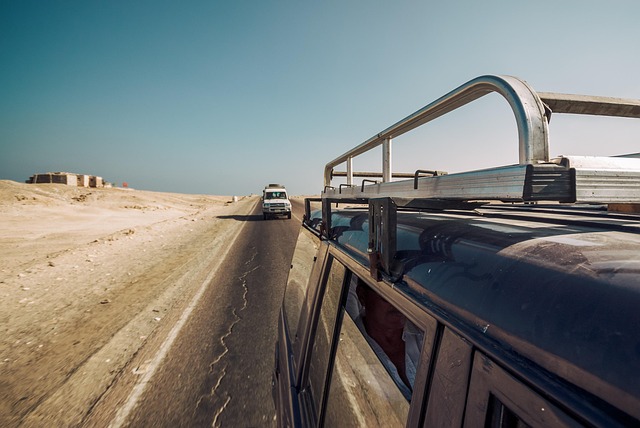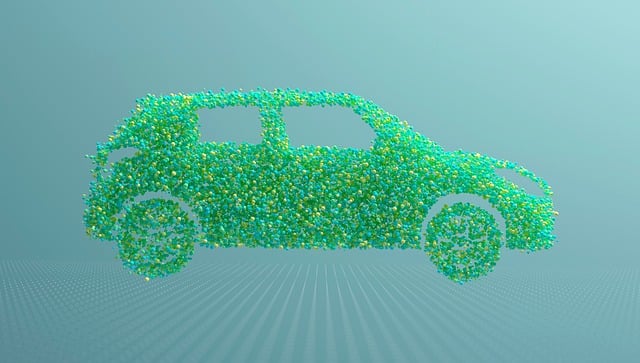Looking to register your car in California? Navigating the process can seem daunting, but with the right preparation, it’s a breeze. This comprehensive guide breaks down every step involved, from understanding the California car registration process and gathering required documents, to the crucial role of the DMV and VIN verifier. By following our simple, step-by-step instructions, you’ll be legally registered in no time. Plus, learn valuable tips for post-registration considerations to ensure a smooth ownership experience.
- Understanding the California Car Registration Process
- Gathering Necessary Documents for Registration
- The Role of the DMV and VIN Verifier in Car Registration
- Steps to Register a Car in California: A Step-by-Step Guide
- Post-Registration Considerations and Important Tips
Understanding the California Car Registration Process

In California, registering your car involves a straightforward process that begins with gathering essential documents and ensuring your vehicle meets all safety standards. The first step is to obtain a Vehicle Identification Number (VIN) verification from a trusted source like the DMV or a mobile VIN verifier. This crucial step ensures the vehicle’s authenticity and history, which is vital for roadworthiness.
Once you have your VIN inspection done, you can visit any California Department of Motor Vehicles (DMV) office to register your car. Bring along documents such as proof of ownership, valid identification, and any necessary fees. The DMV will verify your paperwork, conduct a brief inspection, and issue a registration certificate once everything is in order. Alternatively, many counties now offer mobile VIN verification services, allowing for a more convenient and potentially faster way to start the registration process from the comfort of your home.
Gathering Necessary Documents for Registration

Before you begin the registration process, it’s crucial to gather all the essential documents required by the California Department of Motor Vehicles (DMV). This includes the vehicle’s registration certificate from the previous owner, a valid driver’s license, proof of insurance, and identification documents like a passport or state-issued ID. Additionally, you’ll need to undergo a Vehicle Identification Number (VIN) inspection, which can be conveniently done through a mobile vin verification service, ensuring accuracy and saving you a trip to a DMV office.
The VIN is a unique identifier for your car, and a mobile vin inspection allows you to verify its validity remotely. This step is vital as it confirms the vehicle’s history and ensures that it meets all legal requirements before registration. By having these documents ready, you’ll streamline the registration process, making it faster and less cumbersome at the DMV.
The Role of the DMV and VIN Verifier in Car Registration

In California, the Department of Motor Vehicles (DMV) plays a pivotal role in car registration, ensuring that all vehicles on the road adhere to safety and legal standards. The process begins with gathering essential documents, including proof of ownership, identification, and insurance. Once these are ready, individuals must visit or contact their local DMV office, where they will undergo a series of checks and may be required to provide additional information.
Among the critical steps in car registration is the involvement of a Vehicle Identification Number (VIN) Verifier. This professional conducts a thorough inspection, which includes verifying the VIN through a mobile vin inspection or online databases, ensuring its accuracy and authenticity. The verifier also checks for any potential issues with the vehicle’s history, such as outstanding recalls or previous accidents, which could impact registration. This meticulous process, often facilitated by mobile vin verifier services, is crucial in maintaining the integrity of California’s vehicle registration system.
Steps to Register a Car in California: A Step-by-Step Guide

Registering a car in California involves several straightforward steps. Begin by gathering all necessary documents, including your vehicle’s certificate of title (or proof of ownership), valid driver’s license, and current insurance card. Next, visit a California Department of Motor Vehicles (DMV) office or use their online services to initiate the registration process.
To ensure everything is in order, conduct a DMV vin verifier check using your vehicle identification number (VIN). For convenience, you can even opt for a mobile vin inspection or utilize a mobile vin verifier app to verify your car’s history and details remotely. Once your VIN has been checked and all documents are in place, submit them along with the required fees, which typically include a registration fee and a vehicle sales tax. After processing, you’ll receive your new California license plate and official vehicle registration paperwork.
Post-Registration Considerations and Important Tips

After successfully registering your car with the DMV, there are several post-registration considerations to keep in mind. One important step is to ensure that your vehicle passes the state’s emission standards and safety inspections. In California, this often involves a thorough vin inspection or verification using the DMV vin verifier. This process checks for any recalls related to your car’s make and model, ensuring it meets environmental and safety regulations.
Additionally, consider utilizing a mobile vin verifier or mobile vin inspection service for added convenience. These services allow you to get your vehicle’s information and historical data checked right from the comfort of your home or office. This is especially beneficial for busy individuals who value time-saving solutions while maintaining their car’s compliance with California’s registration requirements.
Registering a car in California is a straightforward process, but it requires careful preparation. By understanding the steps involved, gathering all necessary documents, and utilizing trusted resources like the DMV and VIN verifier, you can ensure a smooth registration experience. Remember to follow the step-by-step guide diligently and consider any post-registration tips for a seamless transition into California’s automotive community.
